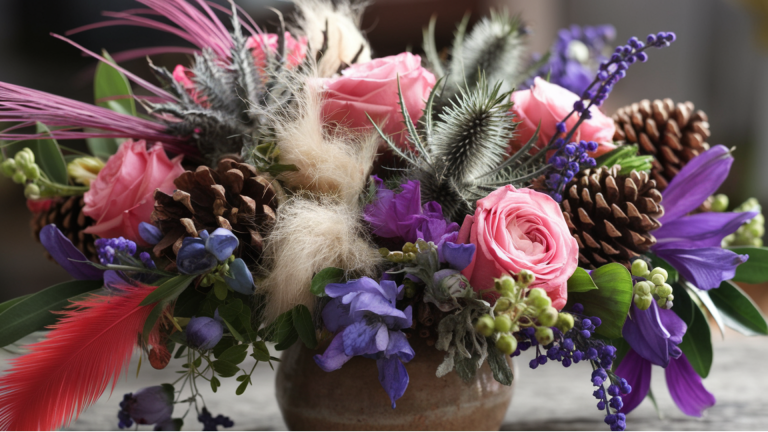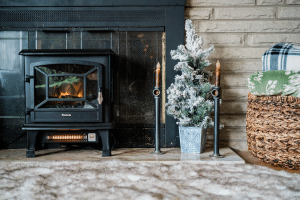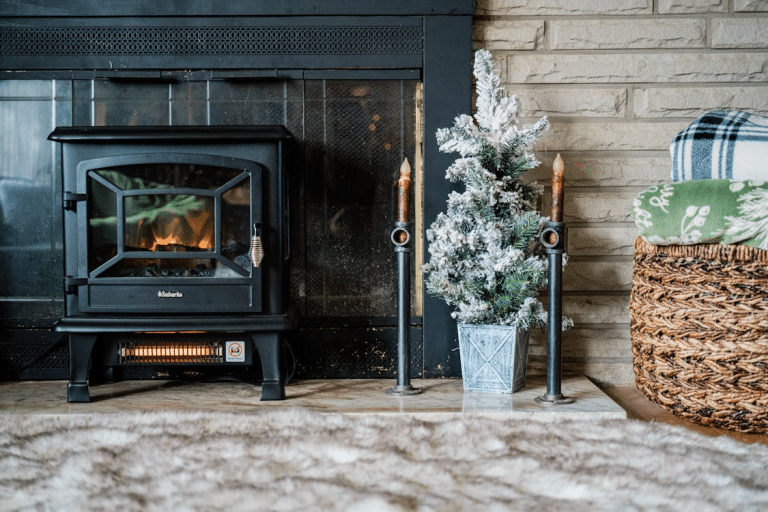Have you ever noticed how some flower arrangements pop, while others fall flat? The secret might be texture in floral design.
Think of texture as the “feel factor,” both how flowers feel to the touch and how they look to the eye. Many people focus only on colors and miss this key element.
In this blog, we’ll see what texture means in flower arranging, why it matters, and how to use it in your designs.
You’ll learn about smooth, rough, fuzzy, spiky, and other textures, plus how to mix them for different occasions.
By understanding texture in floral design, you’ll create arrangements that look more professional and catch everyone’s eye.
Understanding Texture in Floral Design
What is Texture in Floral Design?
Texture refers to the surface quality of plants used in arrangements – how they look and feel.
It includes smooth rose petals, rough eucalyptus leaves, fuzzy lamb’s ears, and spiky thistle flowers.
While we experience texture through touch, our eyes also perceive these qualities from a distance, creating both tactile and visual impressions.
Why Texture Matters in Floral Arrangements
Texture creates visual interest by breaking monotony and directing attention.
Contrasting smooth roses against rough pinecones makes both elements stand out.
Texture also affects mood – soft, fuzzy textures feel cozy and comforting, while crisp, structured elements appear formal.
The right texture balance creates arrangements that connect emotionally with viewers.
Types of Floral Textures
Common Floral Textures
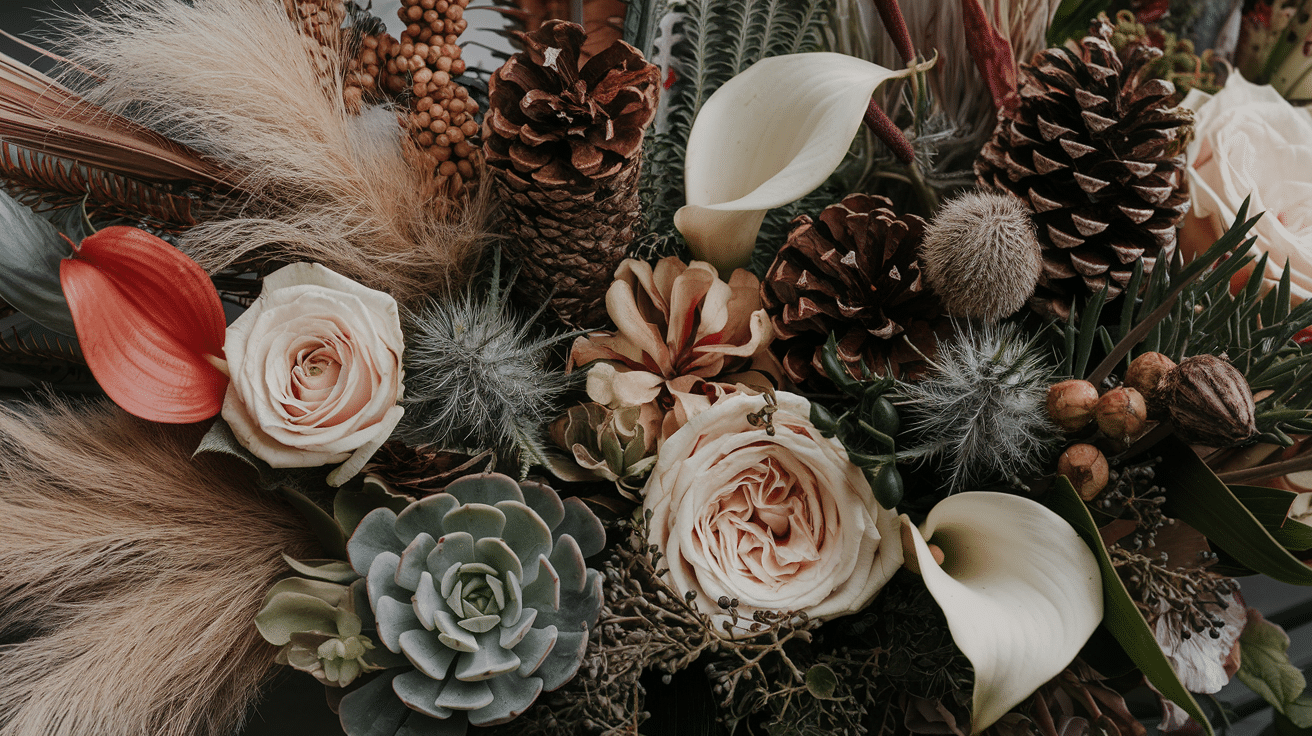
Flowers and plants offer many different textures that you can use in your arrangements:
- Smooth: Rose petals and calla lilies have flat, sleek surfaces that feel like silk. In arrangements, they look clean and formal.
- Rough: Pinecones, seed pods, and some leaves have bumpy or uneven surfaces. They add a natural, outdoor feel to your designs.
- Fuzzy: Lamb’s ear and dusty miller have tiny hairs that make them soft to the touch. They look like velvet and add a gentle quality.
- Spiky: Thistles, sea holly, and some grasses have points or sharp edges. They create energy and movement in flower designs.
- Feathery: Ferns, Astilbe, and pampas grass have light, airy parts that move easily. They make arrangements feel soft and flowing.
- Waxy: Succulents, anthurium, and some tropical leaves have thick, shiny surfaces. They look modern and last a long time.
How to Use Different Textures Together

Mix smooth flowers with rough elements to create contrast. Place the fuzzy lamb’s ear next to the waxy anthurium to make both stand out.
Start with a base of one main texture, then add small amounts of others. For a calm look, use similar textures like smooth roses with smooth lilies.
For an exciting design, mix very different textures like spiky thistles with soft peonies.
Too many different textures can look messy, so limit yourself to three or four types.
How to Achieve Texture in Your Floral Designs
Adding texture to your flower arrangements brings them to life and makes them more interesting.
With the right mix of materials and some basic steps, you can create designs that catch the eye and feel great, too.
Materials that Add Texture
Flowers with different petal shapes add basic texture – try roses (smooth), sunflowers (rough centers), and dahlias (layered).
Foliage works hard in arrangements – mix shiny magnolia leaves with matte eucalyptus or spiky holly. Your vase matters, too – try rough ceramic, smooth glass, or woven baskets.
Ribbons, twine, and wire can be wrapped around stems or add extra texture. Choose materials that work together but offer some contrast.
Steps to Add Texture to Flower Arrangements
- Start with a base texture: Choose the main feeling you want – soft, rough, or smooth – and pick flowers that match this. This will be about 60% of your arrangement.
- Add contrast: Pick 1-2 textures different from your base. If you started soft, add something spiky or smooth. These should make up about 30% of your design.
- Include foliage: Leaves and branches add texture naturally. Mix at least two types – one smooth and one with more character, like curly willow or ferns.
- Think about layers: Place different textures at different heights. Maybe rough textures in the middle, smooth ones on top, and hanging textures around the edges.
- Finish with small details: Add tiny flowers, berries, or seed pods in small groups. These little touches add final bits of texture that make the whole design more interesting.
Creative Floral Texture Ideas for Special Occasions
Special events call for special flower arrangements. Texture can turn basic flowers into stunning designs that fit the mood of any celebration. Here are ways to use texture for those important moments.
Wedding Floral Designs with Texture
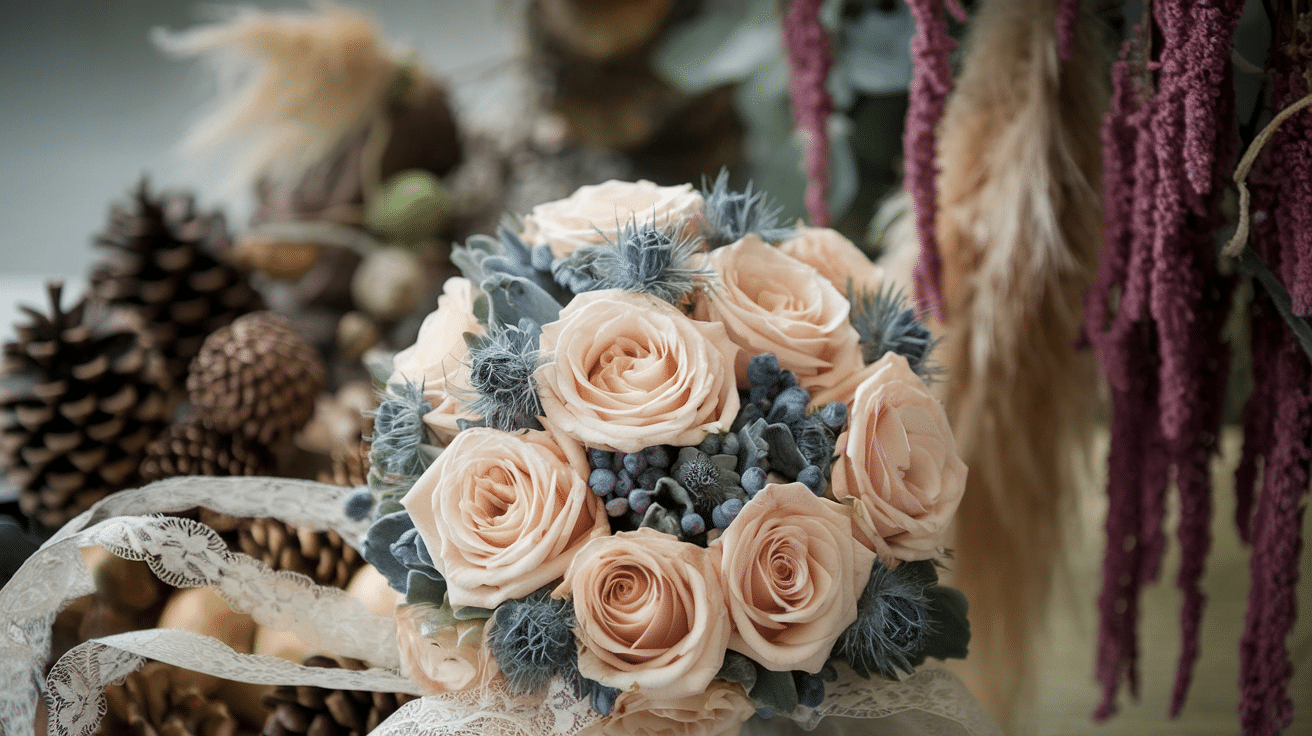
Bridal bouquets shine with mixed textures. Pair soft garden roses with spiky eryngium for a touch of blue. Add a trailing ribbon or lace for extra softness.
For centerpieces, mix smooth blooms with rough elements like pinecones or seed pods. To create drama, ceremony flowers can include fluffy pampas grass or hanging amaranthus.
The contrast in textures makes wedding photos more interesting.
Seasonal Floral Arrangements and Texture

Spring designs work well with soft, ruffled textures like ranunculus and tulips mixed with fresh ferns. Summer calls for smooth sunflowers paired with spiky protea and wispy grasses.
Fall arrangements benefit from rough textures – try oak leaves, wheat, and seed heads with smooth dahlias.
Winter designs can combine waxy holly leaves and smooth roses with pine branches and fuzzy lamb’s ears for a rich texture mix.
Home Decor Floral Textures
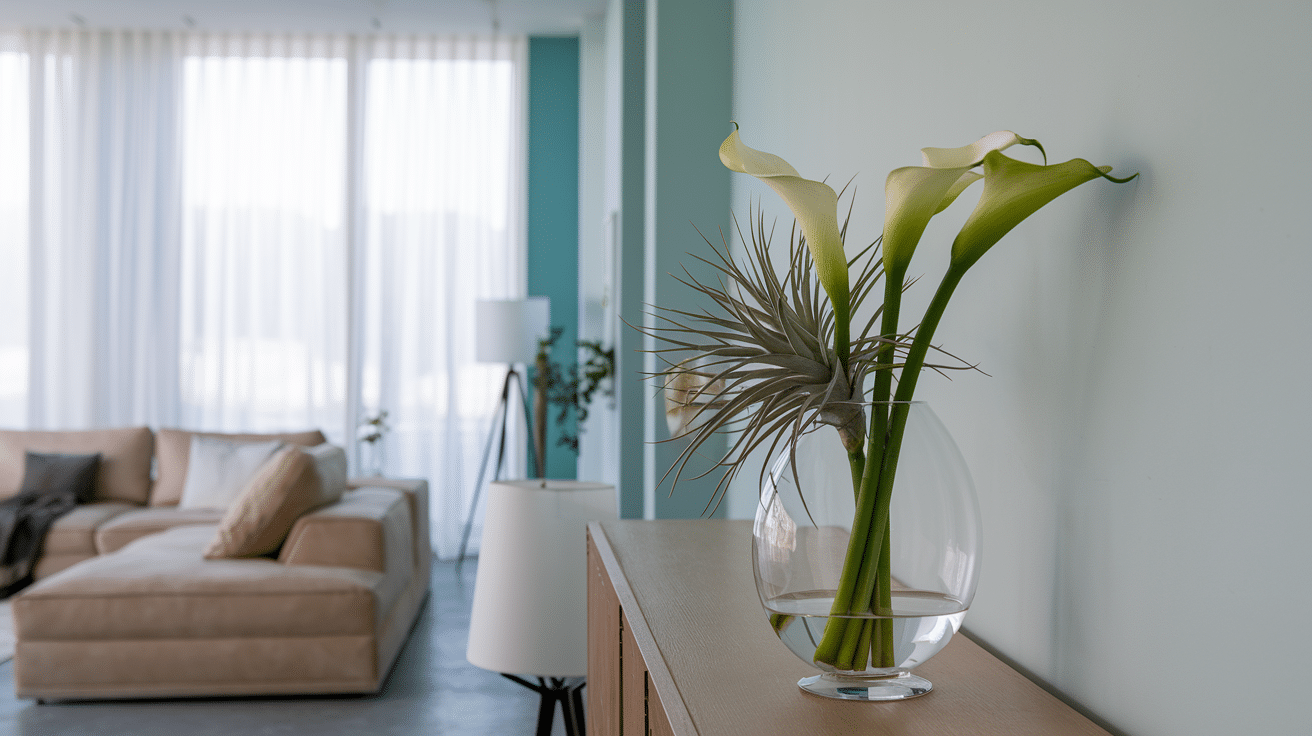
Flowers for the living room and kitchen table work best when they match the style of the home. For modern homes, try smooth calla lilies with spiky air plants in a plain glass vase.
Country-style homes feel warm with rough sunflowers, fluffy cotton stems, and wild grasses in clay pots.
Bathroom flowers should be simple—small, smooth blooms with waxy leaves that withstand humidity. Match your flower textures to your furniture and fabric textures for a put-together look.
Sympathy and Comfort Floral Textures
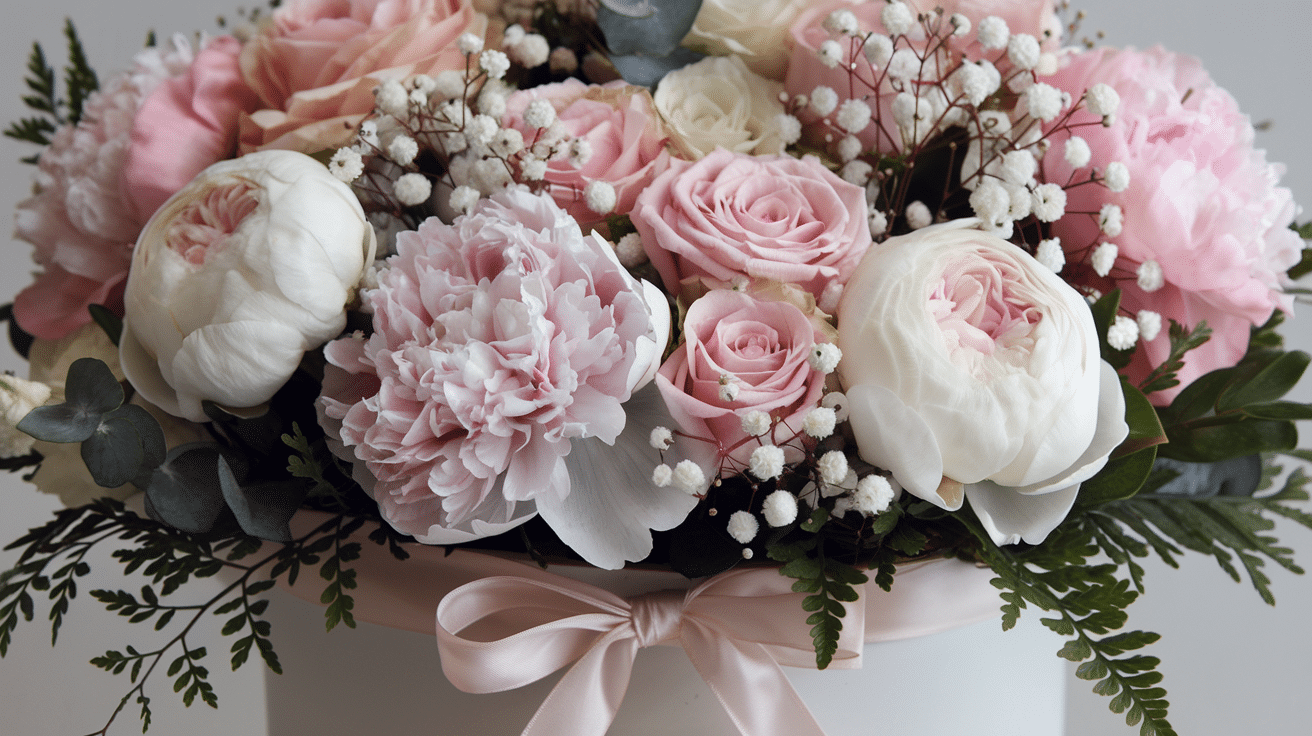
Flowers for sad times need the right textures to show care. Soft, rounded blooms like peonies and carnations give a gentle feeling of comfort.
Add fluffy baby’s breath and smooth roses for a sense of peace. Avoid rough or spiky elements that might seem harsh.
Foliage should be soft and flowing, like ferns or eucalyptus that move slightly in the air. A simple ribbon with a bit of texture, like raw silk, adds a finishing touch without being fancy.
Tips for Mastering Texture in Floral Design
Getting good at using texture takes practice and a bit of planning. Start by looking at flowers not just for their color but for how they feel and what shapes they create.
Think about how different textures work together, just like you would think about mixing colors.
- Take photos of your work to study textures from different angles.
- Touch your materials before using them to understand their feel better.
- Start with three textures – one main texture and two for contrast.
- Look at nature for inspiration from gardens and forests.
- Keep a texture sample box with dried bits to plan future designs.
Wrapping Up
Texture in floral design changes ordinary flowers into special creations. By mixing smooth roses with rough pine cones or adding fluffy elements to sleek surfaces, you make arrangements that people notice.
Start small by adding just one new texture to your next flower design. Touch the flowers and leaves at your local shop before buying.
Take photos of your work to see how different textures look together. Remember that texture in floral design isn’t just about looks – it creates feelings and moods, too.
Try the three-texture rule for your next arrangement: one main texture and two for contrast. Your flowers will stand out, and you’ll enjoy the creative process even more.
For more such interesting blogs, check out our website!


